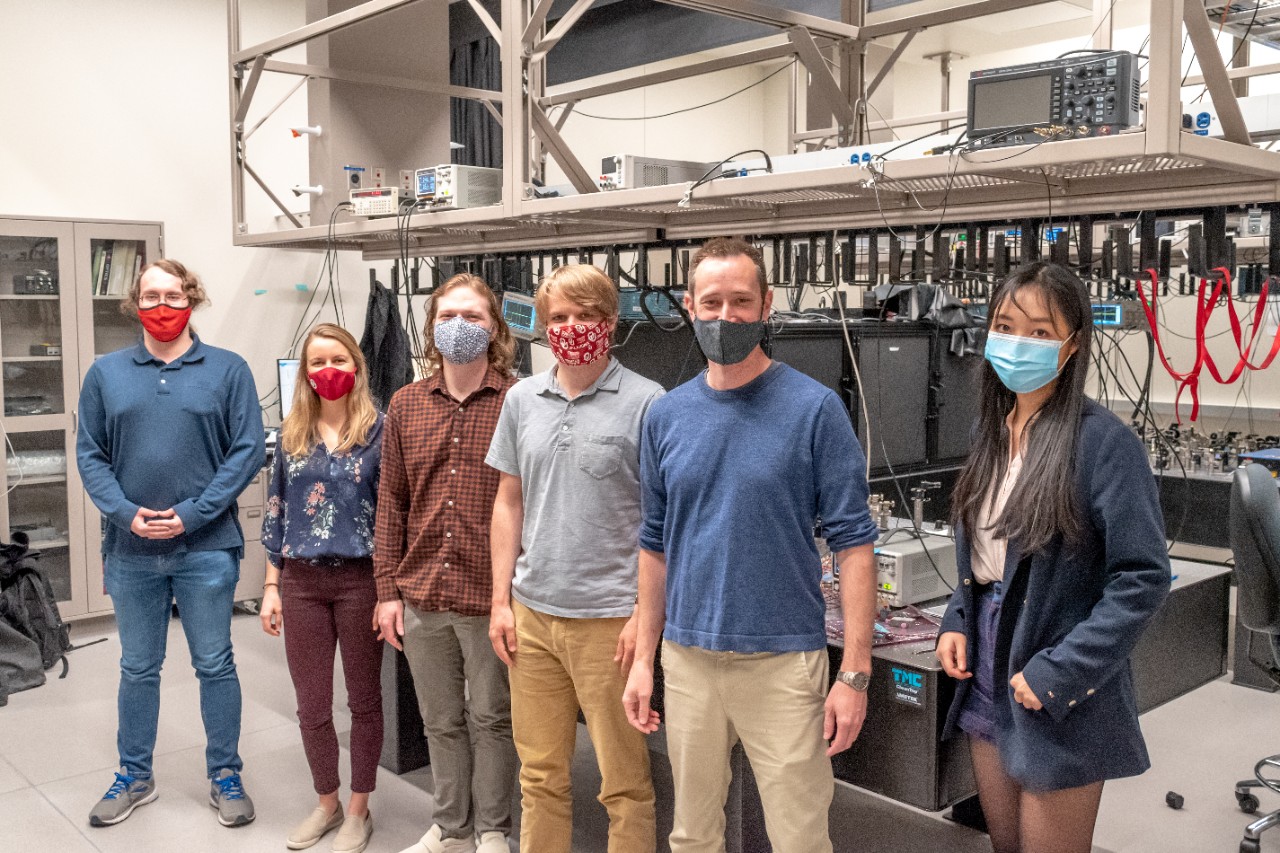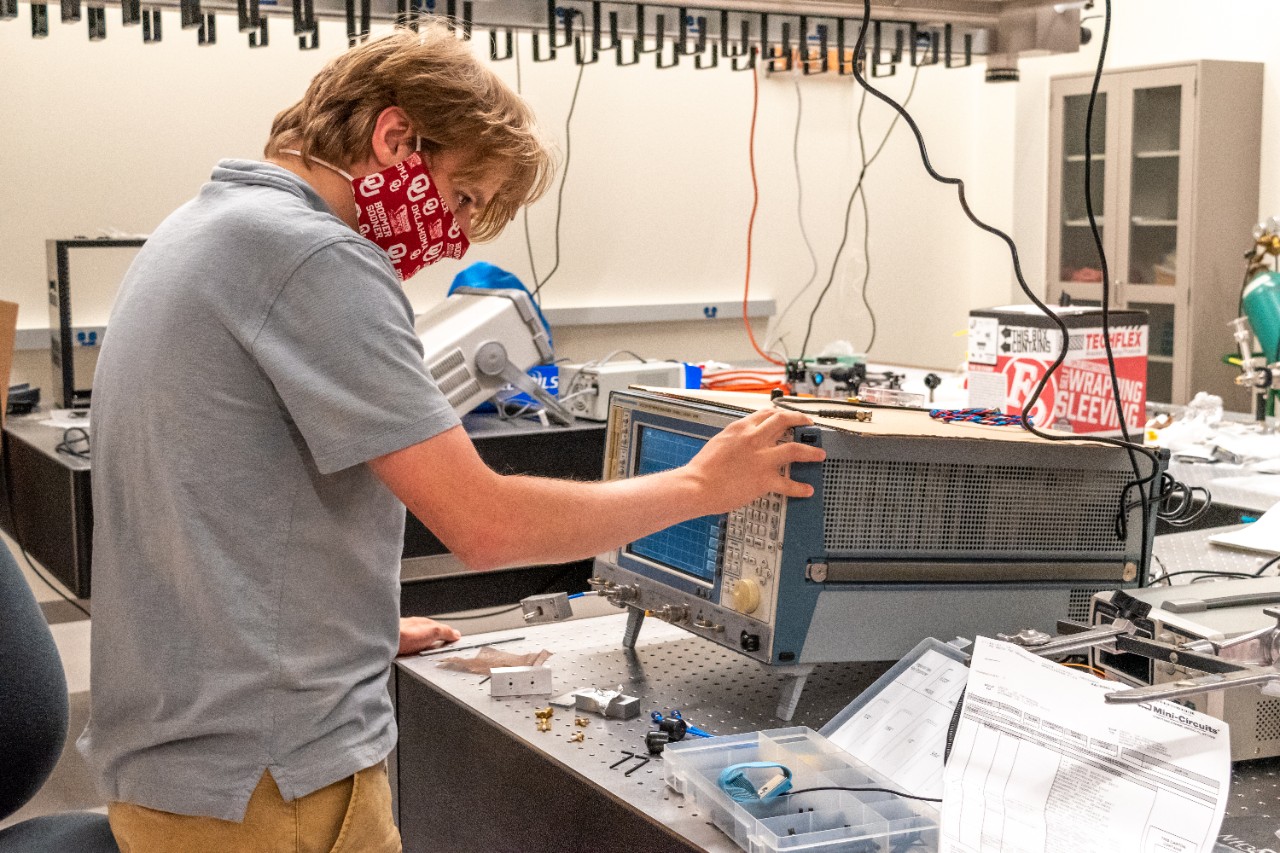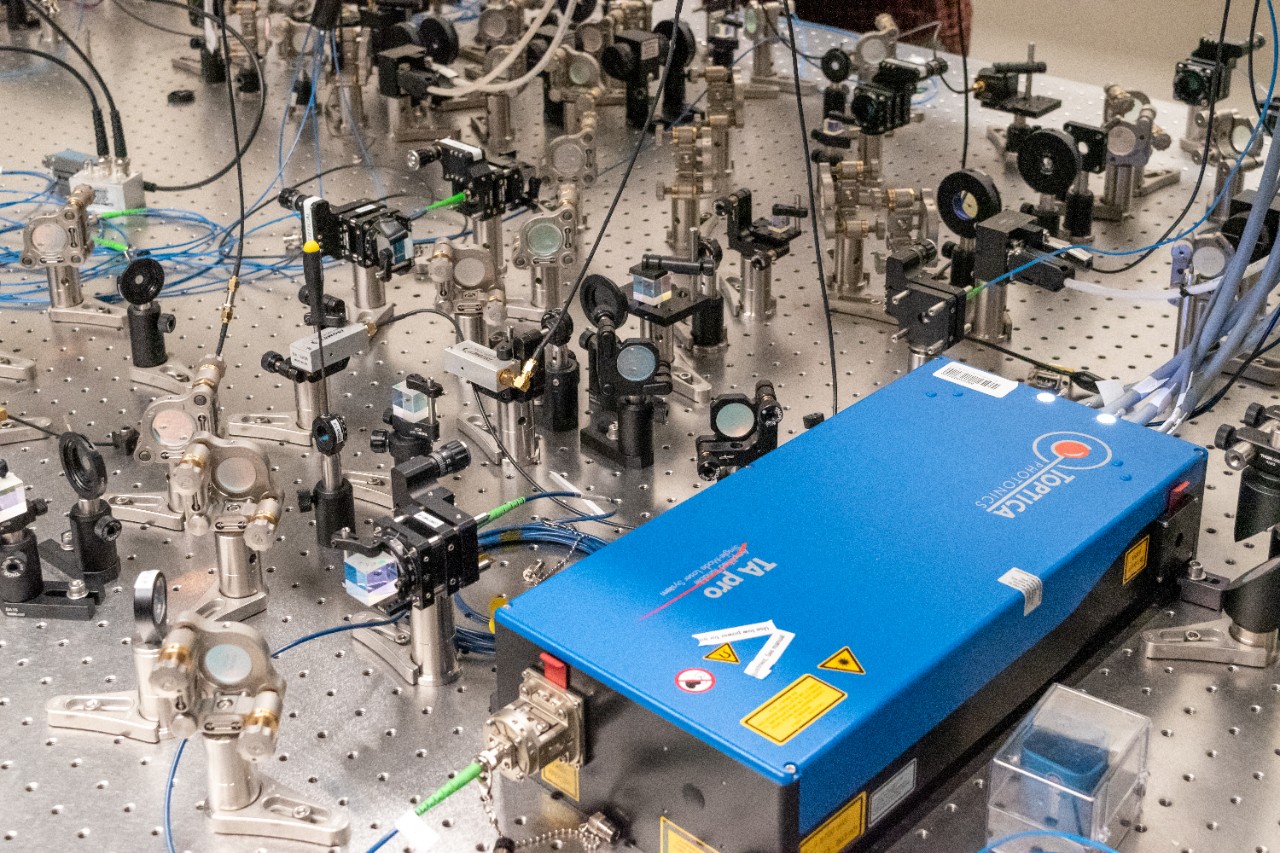
Groundbreaking research is happening across disciplines at the University of Oklahoma. This includes research about one of the smallest levels of matter: atoms.
“We are in the business of learning how to precisely control the quantum state of single atoms in order to push the frontiers of quantum physics,” said Dr. Grant Biedermann of his cold atom research.
Biedermann’s lab is located in Lin Hall, OU’s newest academic building and home to the Center for Quantum Research and Technology (CQRT), dedicated in October 2019 and associated with the Homer L. Dodge Department of Physics and Astronomy. Lin Hall includes research space for the areas of atomic, molecular, and optical physics and condensed matter physics, and Biedermann said the laboratories’ temperature stability, humidity control, and vibration isolation make them some of the best in the United States for this kind of research.
Quantum research and technology is an important area of emphasis for the next generation of scientists and engineers around the world, and Biedermann is excited to be a part of the field.
“I was very compelled by the field of cold atom research because, in general, it’s one of the best ways to make the world’s best measurements,” Biedermann explained. “Precision measurement is the bread-and-butter industry of cold atom physics, from defining the second, to putting new constraints on the gravitational constant, to making some of the world’s best inertial sensors, to just controlling quantum matter in ways that nobody’s done before. You can do that with cold atom physics. Sometimes it’s just a matter of being creative enough and inspired to do it.”
Biedermann was first exposed to cold atom research as an undergraduate student at OU in Dr. Eric Abraham’s lab. Abraham, who is still in the department, had just started at the university and was building an exciting new experiment to manipulate quantum matter.
After completing a master’s degree at Yale and a Ph.D. at Stanford, Biedermann worked at Sandia National Laboratories for more than a decade. Biedermann knew he wanted to return to academia at some point, and the opportunity arose once the CQRT opened.

“This center is more than just a new building. We’re also hiring new people who are coming in from all over the place with new ideas and new research efforts.”
- Dr. Grant Biedermann

OU is a comprehensive research university and is designated by the Carnegie Foundation as a Highest Research Activity Institution. Undergraduate students are encouraged to be involved with research and can do so as early as their freshman year. Jamie Boyd, a senior from Athens, Texas, who is double majoring in physics and French, and Jacob Sims, a physics sophomore from Boston, are two of the undergraduate students who work in Biedermann’s lab.
Prior to joining the lab, Boyd’s research had been online or in data analysis. She admits there was a “big learning curve” at first, but everyone in the lab was helpful, showing her step-by-step how to set up the lasers that are a key instrument in the experiments. Boyd said working in the lab as an undergrad helped her determine she likes research and wants to attend graduate school.
For Sims, it’s been valuable to learn directly from people who have more experience than him, including Dr. Biedermann and the team’s graduate students and postdoc.
“I’ve probably learned more doing this research than I have in my classes because it’s so hands-on, and you really have to understand what you’re doing to do it well,” Sims shared.
Sims encouraged students interested in joining a lab at OU to browse the faculty pages to find research that intrigues them then be willing to send a few emails. In his experience, professors are excited to have undergraduate students who want to work with them.
Quantum technology is an emerging field, and the CQRT places OU at the forefront of this research. As the center continues to grow, there will be more opportunities for students to participate in the research.
“This center is more than just a new building,” Biedermann said. “We’re also hiring new people who are coming in from all over the place with new ideas and new research efforts. We’re growing, and it’s a big deal. Growth takes resources, and the resources are here to do this.”